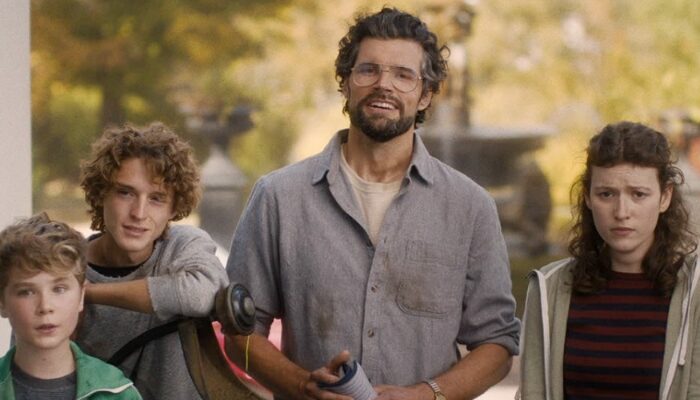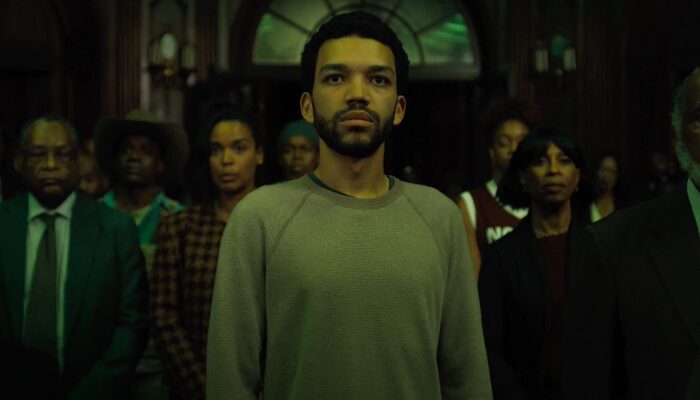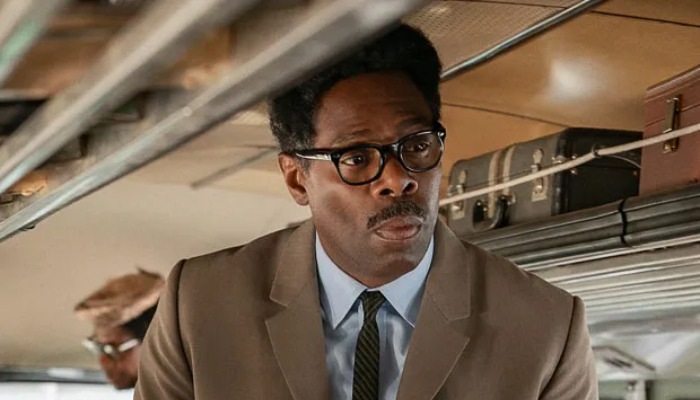Film Review: THE COLOR PURPLE (2023): Director Blitz Bazawule’s Vision of Familiar Source Material Showcases Fine Acting and Powerful Scenes of Deep Drama
The Color Purple Review
The Color Purple (2023) Film Review, a movie directed by Blitz Bazawule, written by Marcus Gardley, Alice Walker and Marsha Norman and starring Fantasia Barrino, Taraji P. Henson, Danielle Brooks, Colman Domingo, Corey Hawkins, Phylicia Pearl Mpasi, Halle Bailey, Ciara, H.E.R., David Alan Grier, Deon Cole, Jon Batiste, Louis Gossett Jr., Tamale J. Mann, Aunjanue Ellis-Taylor, Elizabeth Marvel, Stephen Hill and Adetinpo Thomas.
Blitz Bazawule directs the new remake of The Color Purple. There is fierce, raw emotional intensity attached to all of the central performances within the movie. Back several years ago, I had doubts that Alice Walker’s The Color Purple would make a good musical but was proven wrong by the success of the Broadway show. Now, after seeing the film, I have to admit that every ounce of energy put into the songs in this movie pays off with so many emotionally resonant notes hit by the actresses involved in this picture which is ultimately a film of great depth and scope. Whoopi Goldberg, who appeared in Steven Spielberg’s 1985 film adaptation, comes on-screen in the remake early on which sort of lets the viewer know things are going to be handled respectfully in terms of the presentation of the very delicate material the picture showcases.
The story’s prominent character is the one of Celie who we meet as a young girl (played by the superb Phylicia Pearl Mpasi). Things take a drastic turn for our main character when her father turns Celie over to Mister (the always phenomenal, perfectly cast Colman Domingo), and, as a a result, Celie’s life grows increasingly more sad and frustrating. Celie is best friends with her sister Nettie (the wonderful Halle Bailey of the recent The Little Mermaid remake) and finds comfort in the strong bond she shares with Nettie.
Set in the South during the early 1900’s, the early part of this movie, which develops the sisterly bond between Celie and Nettie, is simply outstanding. Soon, though, Celie and Nettie are forced to separate and Nettie promises they’ll see each other again despite Mister’s promises of violence if the two are reunited again.
Fantasia Barrino takes over the role of Celie as she becomes an adult. Barrino captures the essence of the character she plays so well that it is impossible to imagine anyone else in this role. Danielle Brooks plays Sofia who befriends Celie when she marries her stepson, Harpo (a fine Corey Hawkins) and the two female characters begin to form a connection. Brooks is playing a role made famous by Oprah Winfrey and she is, surprisingly, more than up to the task of succeeding in what is probably the movie’s most crucial supporting role.
Also pivotal to the success of the new remake is Taraji P. Henson. She appears as Mister’s blues singer mistress, Shug Avery. Henson dominates the film with her superlative work and carries a lot of the weight of this film for a significant portion of its running time. Henson is a force of nature and proves that she’s one of the most formidable actresses working today. Every scene she’s in will draw the viewer into the material and into the characterizations that the movie presents. “Push Da Button” may be the most memorable of the songs in the film and it’s one of Henson’s. Character actor David Alan Grier also appears in the movie as Shug’s dad and gives a very respectable performance.
There are some musical numbers here that keep the momentum of the film moving at a steady pace. Filmmaker Bazawule structures the movie around the female bonds that are so pivotal to understanding Celie’s development as a character. The early part of the picture promises the hope that Celie will be reunited with Nettie though for a good portion of this picture, Nettie is with Celie in spirit rather than in physical presence.
Though the movie is ultimately centered on Celie’s personal journey of self-discovery, it also becomes all of these characters’ stories in different ways. Colman Domingo, in particular, is given a very crucial role in the film’s plot and it’s to the actor’s credit that Domingo never falls short in meeting the demands of the story with his fantastic, forceful and vivid performance.
If there’s a flaw in The Color Purple, it’s the abundance of characters that are present here. Too many characters tend to be a characteristic typical of literary works and, perhaps, some of them could have been eliminated from this particular film altogether but nevertheless, at the same time, the movie flourishes by having so many distinguished performers on board. Elizabeth Marvel’s Miss Mllie and H.E.R’s Squeak are so strong in their respective scenes that it’s unimaginable that those characters could have been removed in the editing room.
Barrino, Henson and Brooks are the type of actresses who don’t take any prisoners in terms of letting their characters feel relevant and urgent as one watches this version of The Color Purple. So many important themes are tackled here and the movie never feels like it bit off more than it could chew in terms of heavy subject matters. That’s because the actresses are so compelling in their roles and know how to carry the picture. There are a number of powerful moments here but the ending, in particular, is simply amazing and can’t help but draw tears from viewers.
It’s a bit hard to rank the new The Color Purple as high as Steven Spielberg’s 1985 film version of the material. This is The Color Purple for a new generation and, perhaps, those who haven’t seen the older movie yet will eventually see this as the stronger picture. No matter which one you prefer, Bazawule’s picture is a very distinct work of art and the costumes help define the film’s time period with precision and accuracy. I really was moved by the gravity of the themes found in the new The Color Purple and it’s certain to be a holiday movie hit.
Rating: 8.5/10
Leave your thoughts on this The Color Purple review and the film below in the comments section. Readers seeking to support this type of content can visit our Patreon Page and become one of FilmBook’s patrons. Readers seeking more film reviews can visit our Movie Review Page, our Movie Review Twitter Page, and our Movie Review Facebook Page. Want up-to-the-minute notifications? FilmBook staff members publish articles by Email, Feedly, Twitter, Fac
Related Articles
FilmBook's Newsletter
Subscribe to FilmBook’s Daily Newsletter for the latest news!













